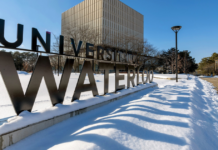It’s now been over eight months since Winnipeg’s city council officially and unanimously changed the name of Bishop Grandin Boulevard to Abinojii Mikanah, meaning “Children’s Road” in Ojibway and Cree, even though one councilor opined the change would be “confusing, costly and potentially even dangerous” in cases where first responders are looking for addresses. He also raised concerns that some people might refuse to use the new, unpronounceable name.
But in early March 2023, a Winnipeg city councillor asked that the planned renaming take place as soon as possible.
Councillor Sherri Rollins, chair of the property and development committee, said the already city-approved new name marks a vital step toward reconciliation with indigenous people, a common sentiment in the same renaming practices occurring across North America.
In support of her position, Rollins noted public demands to ramp up reconciliation efforts have grown considerably across Canada in the two years since the first announcement of more than 200 potential unmarked grave sites on the grounds of the former Kamloops Indian Residential School (IRS) in Kamloops, B.C.
“Abinojii Mikanah, a street (name) that recognizes the children in a very important way that were lost to genocide… (is) of vital importance,” said Rollins.
What she failed to note is that the Kamloops site and dozens like it across Canada have yielded no proof of the existence of the remains of IRS students “discovered” using an inconclusive tool called ground penetrating radar.
One indigenous leader said changing the boulevard’s name will raise awareness about aboriginal history and culture, while helping to bring different communities together. How this name change would achieve these goals was not detailed.
“It’s a good step moving forward to be able to start acknowledging our languages and our people… A lot of our people live in Winnipeg,” said Grand Chief Cathy Merrick of the Assembly of Manitoba Chiefs.
Chief Merrick failed to mention there are already hundreds of indigenous place names in Manitoba including “Winnipeg” and “Manitoba.”
Merrick said it’s also significant to remove the name Bishop Grandin.
“He was an architect of residential schools… The intergenerational impacts of that whole process still affect our people today,” she said.
Merrick failed to reveal that these same impacts occur among indigenous people with no family history of boarding school attendance.
In mid-October, Winnipeg Mayor Scott Gillingham’s inner circle rejected a proposal to rename a section of Abinojii Mikanah following a fierce outcry from indigenous leaders.
The backlash was sparked when two councillors moved a motion to change the name of a new section of the road stretching east of Lagimodiere Boulevard to Edward Schreyer Parkway South. The councillors said it would honour Manitoba’s first NDP Premier who they argued had done much work for the indigenous community.
But Chief Angela Levasseur of Nisichawayasihk Cree Indian Reserve called the move “offensive” and “triggering,” even though giving different stretches of the same road other names is commonplace.
Speaking with the Assembly of Manitoba Chiefs (AMC) On October 17, Levasseur also said under Edward Schreyer’s government, treaty lands were destroyed by the implementation of hydroelectric dams, ruining the way of life for many indigenous treaty people.
Levasseur failed to note that “the way of life” for such people has been inexorably transformed, even “ruined,” by 400 years of previous cultural contact with Western civilization.
AMC Grand Chief Cathy Merrick did commend the mayor and his executive policy committee for rejecting the name change.
“In doing so, they continue to remain on the right side of history – our history,” she said, explicitly opining that indigenous history has higher moral authority and factual accuracy than its Western counterpart.
“But the situation serves as a reminder to all levels of government to work with First Nation leadership, to not make decisions on our behalf. Those days are over,” she also said.
Translation: unwritten and unverified indigenous history, buttressed by aboriginal religious practices, must override written Western history, no questions asked.
This was clearly seen in the origin of the naming itself.
Two of the elders who participated in the “Indigenous Knowledge Naming Circle” offered reflections on the names chosen.
Elder Frank Beaulieu, Treaty One Indian Reserve, said: “It was at the time of the discovery of the 215 children [near the Kamloops IRS]. As we sat together as Knowledge Keepers at the workshop, when they asked my spirit, I thought of, and in clarity, that it would be named Abinojii Mikanah.”
Elder Betty Ross, Pimicikamak Indian Band said: “I offered sacred tobacco and prayers to the creator in my first language, Cree, for guidance and direction on the proposed name changes. Everything came full circle, hence these new proposed Indigenous names.”
The high traffic 11 km, four-lane road in south Winnipeg is among three roads or pathways named after Bishop Vital-Justin Grandin, who lobbied the federal government to fund the construction of residential schools in the 19th century, an effort supported at the time by many indigenous leaders.
Now, indigenous activists claim the name change is not meant to change history but to evolve it, a specious claim at best since it’s a deliberate attempt to erase Grandin’s name from Manitoba history.
How this insipid reversion to a preliterate language most urban aboriginal people no longer speak or understand could be anything but retrogressive seems to have escaped their attention.
Neither Gillingham nor others praising this name change bothered to reveal how this would enhance the life chances of thousands of downtrodden indigenous Winnipeg residents.
Chance Paupanakis, executive director of Akiing Onji Foundation, said it’s important to honour truth as Canada moves forward with reconciliation. He said that includes rewriting its history to reflect how residential schools impact indigenous people in Canada.
He failed to note, however, that history can indeed be rewritten to suit passing contemporary fads, but it can never be changed.
So, what’s the truth about Bishop Vital-Justin Grandin?
Bishop Grandin (Image Source: reflexion chretiene)
Born in France in 1829, from an early age Grandin felt a religious vocation. In 1850, he decided to become a missionary, and, despite a pronounced lisp, ill health, and a shy manner, he was ordained a Catholic priest in April 1854, the same year he was sent by his Oblates of Mary Immaculate clerical order to do God’s work by spreading the gospel and improving the living conditions of aboriginals in the New World.
Grandin had received no specialized preparation in the seminary for work among native peoples when he arrived in Manitoba later that year. Still, he quickly acquired such knowledge, including developing his linguistic skills to learn indigenous languages.
In 1857, the same year he became a church Bishop, he was transferred to Saskatchewan where he adopted two young orphans. “His hope was to educate them and thus establish the foundations for a native clergy.”
For most of the following years, Grandin worked tirelessly to secure funds, provisions, and supply routes for his constantly expanding missionary efforts in Manitoba, Saskatchewan, Alberta, and elsewhere.
This was a time when its indigenous people were suffering from a decline in traditional livelihood practices and dying in large numbers due to a lack of immunity to European contagious diseases. His efforts undoubtedly saved the lives of countless aboriginal people.
Grandin became increasingly convinced of the need to transform traditional indigenous lifestyles to make them compatible with the inexorable changes wrought by a changing Canadian society. This led to his strong support for indigenous children gaining a basic education in suitable vocational skills. For this purpose, in 1879–80, Grandin asked the federal authorities to help by increasing grants to existing schools and orphanages and by building industrial schools. In the latter, boys would spend part of the day working on the school’s farm and in its shops, and girls would learn domestic arts in the kitchen and laundry.
As a result of requests by Grandin and other missionaries, the government authorized the construction of three industrial schools in the west in 1883.
During all the years that Grandin oversaw these efforts, indigenous school attendance was both voluntary and eagerly sought by indigenous parents and leaders. There is no evidence that the lives of children at these schools were harsh or oppressive, at least compared to non-indigenous boarding schools during the same era.
Grandin had reluctantly assumed episcopal office, but he was nevertheless a prudent and efficient administrator who endowed his diocese with parishes, schools, hospitals, orphanages, and a minor seminary. His many missionary and welfare efforts designed to improve the lives of indigenous people continued until he died in 1902.
In 1929, canonical investigations were begun for his beatification, and in 1966 he was declared venerable.
In 1979, the new road over the Red River was given Bishop Grandin’s name to commemorate his good works.
For all these noble efforts based on ordinary 19th and early 20th century beliefs and values, now viewed through ahistorical and temporarily trendy woke ones, Grandin has been cancelled in Winnipeg by those both implicitly and explicitly denying that Western civilization has produced some of the most stunning scientific, technological, social, cultural, and religious accomplishments and breakthroughs in human history.
The irony underlying the mindless contemporary preoccupation with erasing the past resulting in Grandin’s shameful shunning is that few, if any, aboriginals would willingly revert to their full-fledged pre-industrial lifeways based on a constant and insecure struggle for survival surrounded by hostile enemies from other indigenous groups.
Nor will Grandin’s removal based on a fictitious rewriting of history ever expunge the truth about his life and achievements.





















